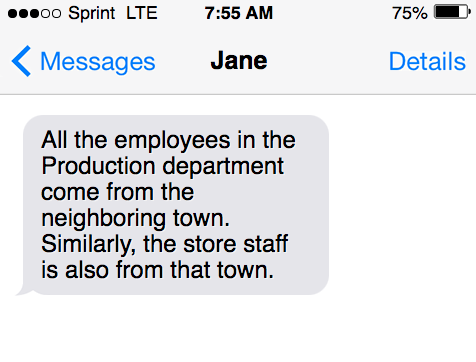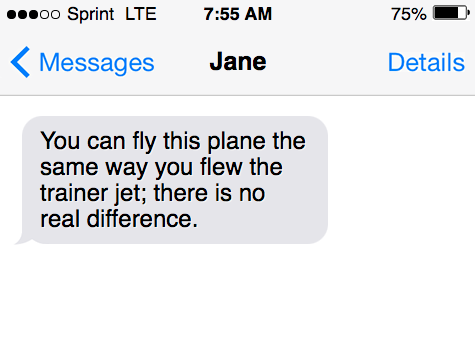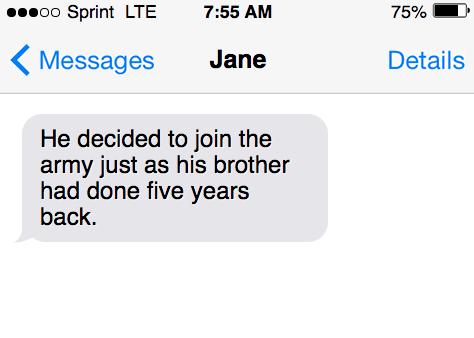

What are transition sentences? And how do they work? Is there a correct way to use them? And an incorrect way? Understanding transition sentences is critical when writing essays, articles, or any type of logical flow.
Learn what transitional sentences are in this short guide…
When you write an article, essay (or anything), you’ll want to write it in a logical sequence. You start with an introduction, highlight your points, and then end with a conclusion. Throughout your writing, you would be using sentences to express your thought. To make your writing effective, you need to link the sentences together in a logical way.
This is where transition sentences can be helpful.
As the name suggests, a transition sentence links the thoughts you are expressing in your writing. They make use of words and phrases that act as a bridge between different parts of your writing.
Transition sentences allow your reader to move smoothly from one section to another. Without transition sentences, your reader might not be able to understand the link between different parts of your writing.
Look at this example:
The CEO was very clear that productivity and efficiency were the two key things he would focus on. However, the legacy systems followed by the company acted as a detriment. Tech modernization was the solution that would enhance productivity and efficiency.
Sentences one and three make sense by themselves. But it is important to establish a relationship between the two. This is what the second sentence does. It acts as a bridge (or transition) between the first and third sentences. By doing so, it helps the writer communicate their ideas more effectively.
A good transition sentence would bring clarity by linking ideas expressed in the sentences before and after it. Words and phrases like ‘however,’ ‘in contrast,’ ‘for instance,’ ‘in fact,’ and ‘therefore’ can get used to help make the transition.

Many transition words are available to use. Choose the appropriate word for the situation.
For example, if you want to show the sequence between two sentences, you can use a word like ‘then’ or ‘after.’ If you want to emphasize a point through the transition, you can use ‘indeed,’ ‘especially,’ or ‘particularly.’
Transition words can be used at the start of the sentence (e.g., Surely, you are not going to go now!). It can also be used within the sentence (e.g., I rejected the job offer because the salary was lesser than my present pay).
Here are a few tips that will help you use transition words correctly:
Transition sentences would use both words and phrases as the bridge. A few phrases that are used include:
Conjunctive adverbs can be used to establish the logical link between ideas. They can be classified under five heads. It must be noted some words appear in multiple categories.
The following example will make this clear.
First, put a pan on the stove and heat it. Next, add oil to the pan.
In the above, first and next act as the transition and are adding on to what is being said previously.

These words establish a contrast or difference while making the transition.
The island was not the paradise we were hoping for. On the contrary, it was dirty, noisy, and had unmanageable traffic.
The above example brings out a contrast between expectations and reality.
Jonathan is crazy about chess. His daughter is similarly a big fan of the board game.
In this example, the word similarly shows a comparison between father and daughter. You may note the transition word need not be at the start of the sentence. It can be placed anywhere.
These transition words are indicative of a result. It shows the result of the previous sentence/idea.
Their star player was suffering from a hamstring injury and could not play. Hence, their team faced a humiliating defeat on match day.
The star player’s absence resulted in the team’s defeat. The transition word ‘Hence’ in the example is the bridge between the cause/event and the result.

Some transition words show relationships in time. They include:
The speaker will be a bit late for the talk. Meanwhile, let’s ask the participants to share their views on the program.
As the speaker will be late, there is time left. So, the participants are asked to share their views and opinions. In this example, ‘Meanwhile’ is a transition word that shows relationship to time.
You can use a subordinating conjunction in a sentence to join a dependent clause to an independent clause.
Example: When the postman came, my dog greeted him with a volley of barks.
In this example, the word ‘when’ is the subordinating conjunction that joins ‘the postman came’ and ‘my dog greeted him …’
The subordinating conjunction serves a special purpose here. It acts as a transition between two ideas. The use of the coordinating conjunction provides a logical flow.
Example: He is smarter than you are.
In this example, “than” is the subordinating conjunction that connects ‘He is smarter’ and ‘you are.’ It provides the bridge or transition between the two clauses.
Let’s look at another example to understand this. There are two clauses – ‘The spring arrives’ and ‘my hay fever gets aggravated. A subordinating conjunction can link the two. We can use ‘As’ here. So, the sentence would now read – ‘As the spring arrives, my hay fever gets aggravated.’
The correlative conjunction shows a correlation between two words or phrases within a sentence. They play a key role in transition sentences. The use of a correlative conjunction ensures a smooth flow between two sentences or ideas.
Example: My boss totally ignored my work. Neither my hard work nor my punctuality impressed him. So, I decided to move on and look for a new job.
In the above example, sentences one and three are independent and convey the meaning clearly. However, the second sentence acts as a transition explaining why sentence one leads to sentence two.
In the second sentence, we see the use of neither … nor. This combination of words acts as correlative conjunctions in this example.
Some other words that work as correlative conjunctions are:
Whether you want to have dinner or prefer to skip it is entirely left to you.
The above example uses Whether … or as correlative conjunctions in the sentence.
Examples of transition sentences:
To communicate similarities, you can use transitional words like:
Examples of sentences where the transition word communicates similarities:
Words like ‘especially,’ ‘above all,’ ‘particularly’, ‘indeed,’ in fact,’ and ‘in particular’ can be used to express emphasis. When used in transition sentences, they emphasize the idea express previously.
Transition sentences can be very helpful in showing cause and effect or result. The following words can be used for this:
Position or place can be indicated through the use of transition words like:
Transition words are perfect to use while describing a sequence. The words that can be used are:
Transition words can be used to show examples or illustrate a particular point. Some words to use are:
Transition sentences can get used within a paragraph. It also can get used between paragraphs.
This is important since the transition sentence provides a flow between paragraphs. It allows the readers to understand the relationship between the ideas expressed in those two different paragraphs.
When you start writing a paragraph, show a link to the previous paragraph in the first sentence. This establishes a bridge between both paragraphs.
There is no doubt that the effects of pollution by industries. This is why activists call for a ban on industries to stop pollution.
Despite the previous argument, we must also think about the economy. Banning industries will bring the economy to a standstill.
This example, ‘despite the previous argument’ is used to transition between the two paragraphs.
In contrast, the first part calls for a ban on industries, and the second discusses the economic effect. Using a transition allows for a smooth flow between the two.
The use of transitions is very important in essays. An essay is written to convey an idea, opinion, or viewpoint. To ensure its effectiveness, transition sentences are needed at different parts of the essay. Transition sentences are needed between sentences, between sections, and at the conclusion of the essay.
Transition sentences are used throughout a write-up. It is imperative that the conclusion also has a transition. Your write-up needs to end with a summary of what you are trying to say. Or with a call-to-action. Using transition words in the conclusion can help you achieve this.
More on sentence structure:

Fact checked:
Content is rigorously reviewed by a team of qualified and experienced fact checkers. Fact checkers review articles for factual accuracy, relevance, and timeliness. Learn more.

About the author
Dalia Y.: Dalia is an English Major and linguistics expert with an additional degree in Psychology. Dalia has featured articles on Forbes, Inc, Fast Company, Grammarly, and many more. She covers English, ESL, and all things grammar on GrammarBrain.